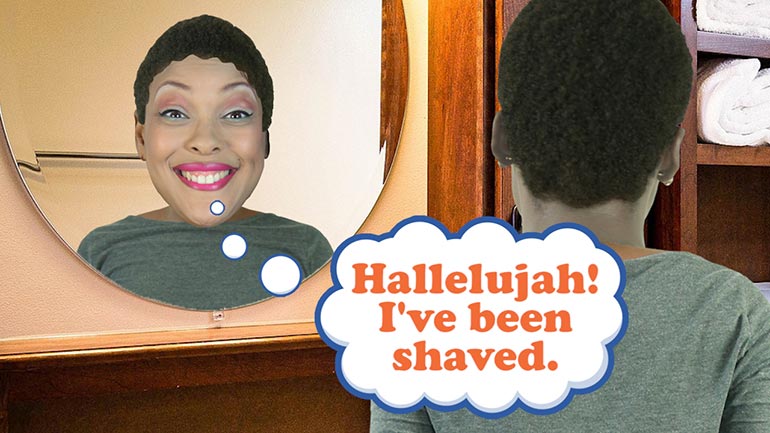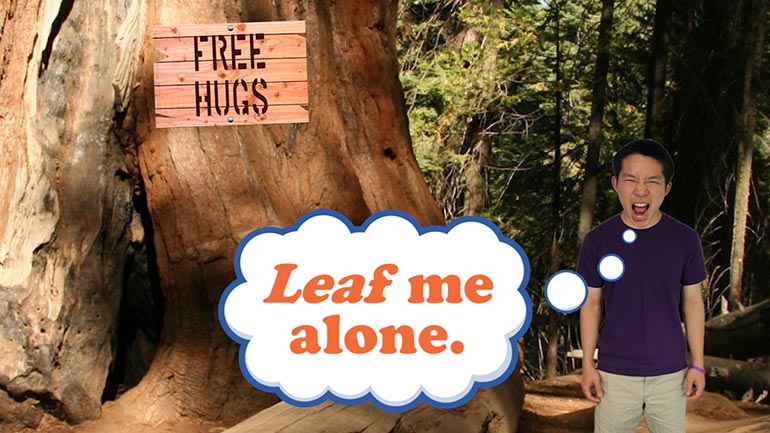ShmoopTube
Where Monty Python meets your 10th grade teacher.
Search Thousands of Shmoop Videos
Social Studies 4: What Do Maps Do? 835 Views
Share It!
Description:
Well...not really anything to be honest. They just kind of lay there. If they moved and did things on their own, that'd be pretty alarming. Oh, but you can do all kinds of things with maps. That's probably what this video's about.
Transcript
- 00:05
[Dino and Coop singing]
- 00:13
Try to imagine a time before smart phones.
- 00:16
We know, it’s hard and it makes you sad, but just give it a shot. [Girl crying looking at her phone]
- 00:20
How do you think people got around before Google Maps was an option? [Someone using Google Maps on their phone]
- 00:23
Drumroll please….they used….regular ol’ paper maps. Yep. Paper. Maps. [A paper map pops out of a magicians hat]
Full Transcript
- 00:30
Maps are essentially models of locations on Earth,
- 00:33
and can vary greatly depending on what their purpose is. [Coop pointing at a blackboard]
- 00:36
The first thing you want to do when you look at a map is check out its title, which usually
- 00:40
identifies the location on Earth that the map is displaying. [Arrow pointing to the title of the map]
- 00:42
So whether it's a map of North America or a map of all the Burger Kings in Texas, you'll [Burger Kings popping up all over the map]
- 00:46
want to make sure you know what you're looking at first.
- 00:49
Then there’s the Map Legend. You can think of that as the decoder key, used to figure
- 00:54
out what all the funny-looking symbols mean.
- 00:56
Without a legend, you might think this symbol means “store that only sells things that [House symbol with an M on it]
- 01:00
begin with the letter M” and this symbol means “haunted swing set that always has
- 01:04
a ghost on it” and this symbol means “famous place where a guy with only one arm once swam.”
- 01:09
But with a legend, you'll know what these symbols actually mean.
- 01:12
Though prepare to be disappointed. The real meanings of the symbols are far less exciting. [The legend shows the symbols for swimming, motel and playground]
- 01:16
Another important to thing to take note of is something called the “scale.”
- 01:19
It helps you figure out the actual size of places on the map. [Arrow pointing to the scale]
- 01:23
Take this map for instance, which shows that the lemonade stand is
- 01:26
three-square units from the bathrooms.
- 01:28
If the scale says that each square unit is only 10 feet, well, then you're in pretty good shape.
- 01:33
But if each square unit is one whole mile… well, then it might be a good idea to skip [Scale changes to miles]
- 01:37
the super jumbo cup of lemonade. Now see this thing here? That's the compass rose.
- 01:41
Its job is to tell you where North is, so that you can always figure out which way
- 01:45
to turn the map in order to go where you actually want to go.
- 01:48
And trust us, this one is really important. Finding out you've been walking away from [Guy screaming walking the wrong way past the bathroom sign]
- 01:52
the bathrooms instead of toward them when you really, really have to go has to be some kind of torture. [Guy shown on the map walking away from the bathroom]
- 01:57
The last thing you might want to look out for is an “inset map.”
- 02:00
This is when there's an enlarged part of the map used to give more information about a specific area.
- 02:06
Take, for instance, a map of a gigantic desert.
- 02:08
Pretty boring, right? It sort of just looks like nothing.
- 02:11
But what if we told you there was an entire waterpark right in the middle of it, only [Boy going down a water slide]
- 02:16
it's too small to be seen on the map?
- 02:18
You'd want to see the waterpark, wouldn't you?
- 02:20
Well, that's where an inset comes in.
- 02:22
Now, you can see specific details of the waterpark while also seeing the bigger picture... [Inset map of someone flying out the end of the slide into the pool]
- 02:27
…which is that the middle of the desert is either a really clever or a really dumb
- 02:31
location to build a waterpark… Maps have plenty of purposes: they can show [Dino pointing at a blackboard]
- 02:35
the physical geography of a location, indicate population growth, depict climate zones, state
- 02:41
or country boundaries, or even tell you how to get to buried treasure.
- 02:44
Aren't maps great?
- 02:45
Now, if you’ll excuse us, we’ve got treasure to find! [Guy looks at a treasure map and walks off]
Up Next
Sticks and stones, right? Well...only sometimes. It's a good idea to make sure your words aren't going to hurt others. Let's look at some ways to d...
Related Videos
Learn to debate like a champ. It's way better than debating like a chimp. That just takes mudslinging to a whole new level.
Today we'll learn about biographies and autobiographies. And no, the second one has nothing to do with the lives of cars.
In this lesson we'll subject you to some verbs and predicates. Each one is a necessary part of a complete breakfas—er...sentence.
Choosing words carefully is important. You may end up vexing the assemblage of citizens you're conversing with...or you might even just plain bore...




